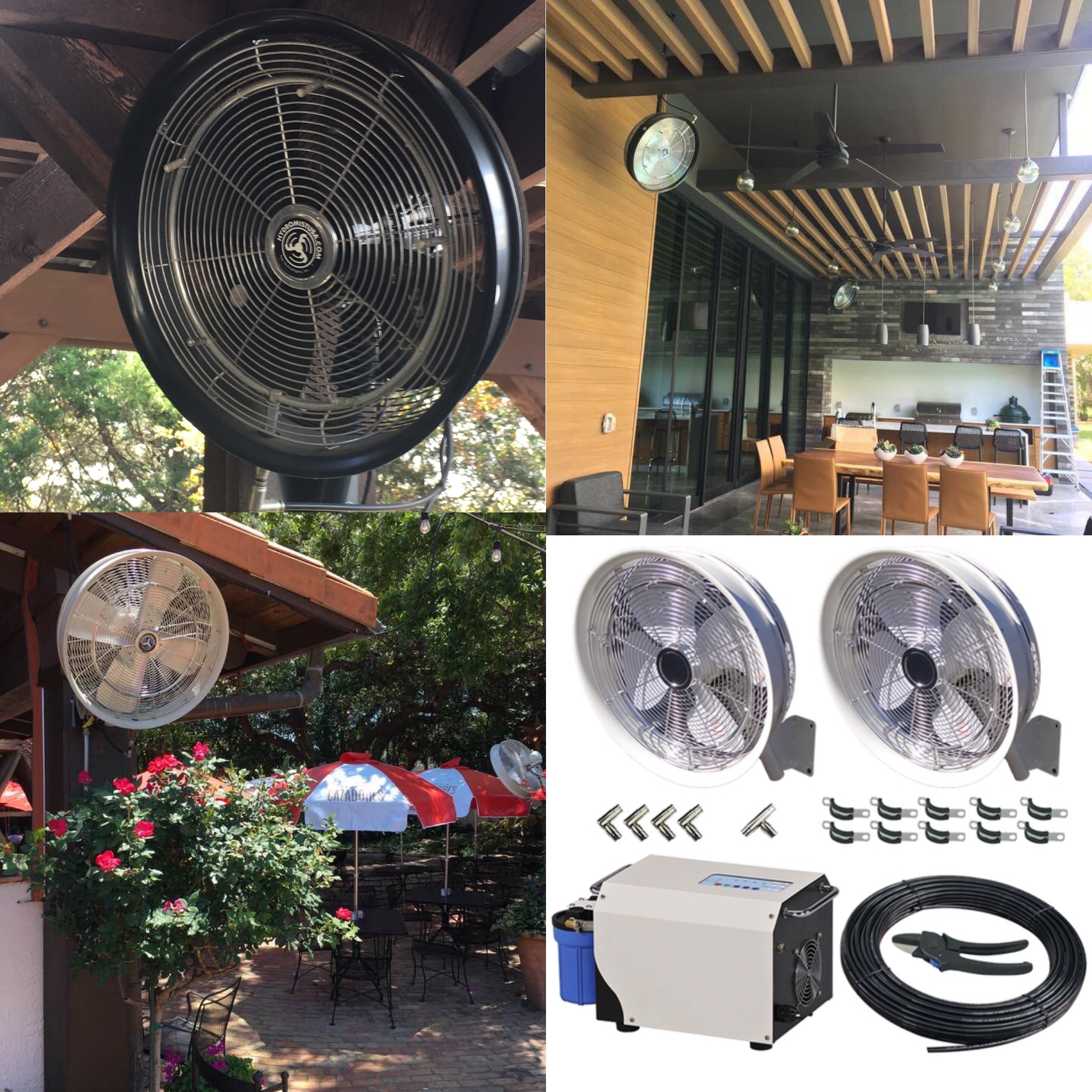What it Takes to Self-Install Misting Fans from Hydromist.
Posted by Kert Kveton on Feb 10th 2023
If your patio or outdoor living space has a tough time staying cool during the hot summer months, one simple solution is self-installing a high-pressure misting fan system from HydroMist. Below is some basic information to determine what you will need and help plan your space for your installation.
What size fans do I need and how many? A good rule of thumb is that if you are mounting fans above 10 feet with no cover, go with 24inch fans. Anything below 10 feet, 18inch fans are more than sufficient for air flow/mist coverage and also better visually. Our fans run quieter than most but our 24- inch fan mounted at 8 ft may be too much noise for smaller outdoor living spaces. Quantity of fans is usually determined by first knowing if there is any wall protection from sun/wind and also if the space is covered. If so, sometimes you can get away with less fans. Spacing fans typically around 15 to 20 ft from each other is recommended in larger open environments. Your fan placement also is considered by power location, mounting locations (pole, wall or ceiling) and again aesthetics.
What pump size do I need and where to put? All of our pumps are high pressure (1000 PSI) This assures that the water droplets are instantly evaporated even in high humidity which will cause the temperature to drop up to 25 degrees. The horse power of the pump is determined by how many mist nozzles on your total fan count. We have a two- 15 nozzle capacity pumps (one w/filter one w/o) and one- 80 Nozzle capacity pump with filter. Our 18inch fan has 5 nozzles and our 24inch fan has 8. It is common to cap nozzles with plugs to accommodate a smaller pump size for budget reasons or also to diminish on the mist outflow in more humid climates. Four to five nozzles are ideal in most US states. The west coast generally can use more than 5 as their climate is more arid. The pump needs to be located close to a water source either with a standard water spigot or to be hard plumbed. You will also need a dedicated outlet for the pumps power. Pumps are standard 110 volts and around 8 amps depending on the output size. Make sure the pump is located on the ground for easy control and service accessibility. Placing the pump on a solid surface also helps dampen the noise from vibration which is key for pumps located close to areas where you don’t want to hear it operate. Protecting the pump from sun and rain exposure is recommended by either covering or placing in a cabinet, closet or storage area. Do not mount or place in any attic space.
What type of hose and how much do I need? Typically, the pumps are connected to the water spigot with a good quality garden hose or washer/dryer hose. Ideally, you don’t want the hose to be longer than 10 ft otherwise you may smell the rubber hose upon turning the system on until the stale hose water mist purges out of the fans. The longer the hose the longer it takes to purge out- 6 feet is ideal. From the pump, you will run the 3/8-inch-high pressure nylon hose. Which we sell by the foot. Our fan packages come with 25 ft per fan which generally works in most residential and commercial settings. You may have to order extra hose if you are running the pump a long distance from the fan. It is recommended you run no more than 500 feet. Keep in mind that you have to go to the pump to turn on the mist. The hose is then cut to length with a pair of good cutters. The high- pressure hose is attached using hose clamps and/ or cable ties in inconspicuous areas such as behind gutters and roof-lines or atop beams. It can also be buried in warmer climates where hard freezes are seldom.
What about the fittings? All of our fittings are compression fittings. They simply work by inserting the hose into the fitting until one cannot push any further. The teeth of the fitting will grip the hose and it is connected. Make sure you measure correctly as these fittings are not made to come apart once the hose is inserted. The less fittings you can use the better to prevent leaks from occurring. Typically, you will want an elbow fitting for each fan and a Tee fitting to split the hose for multiple fans and make for a much cleaner install. The fittings for each hose connection to the fans and the pumps are included and already installed on each.

